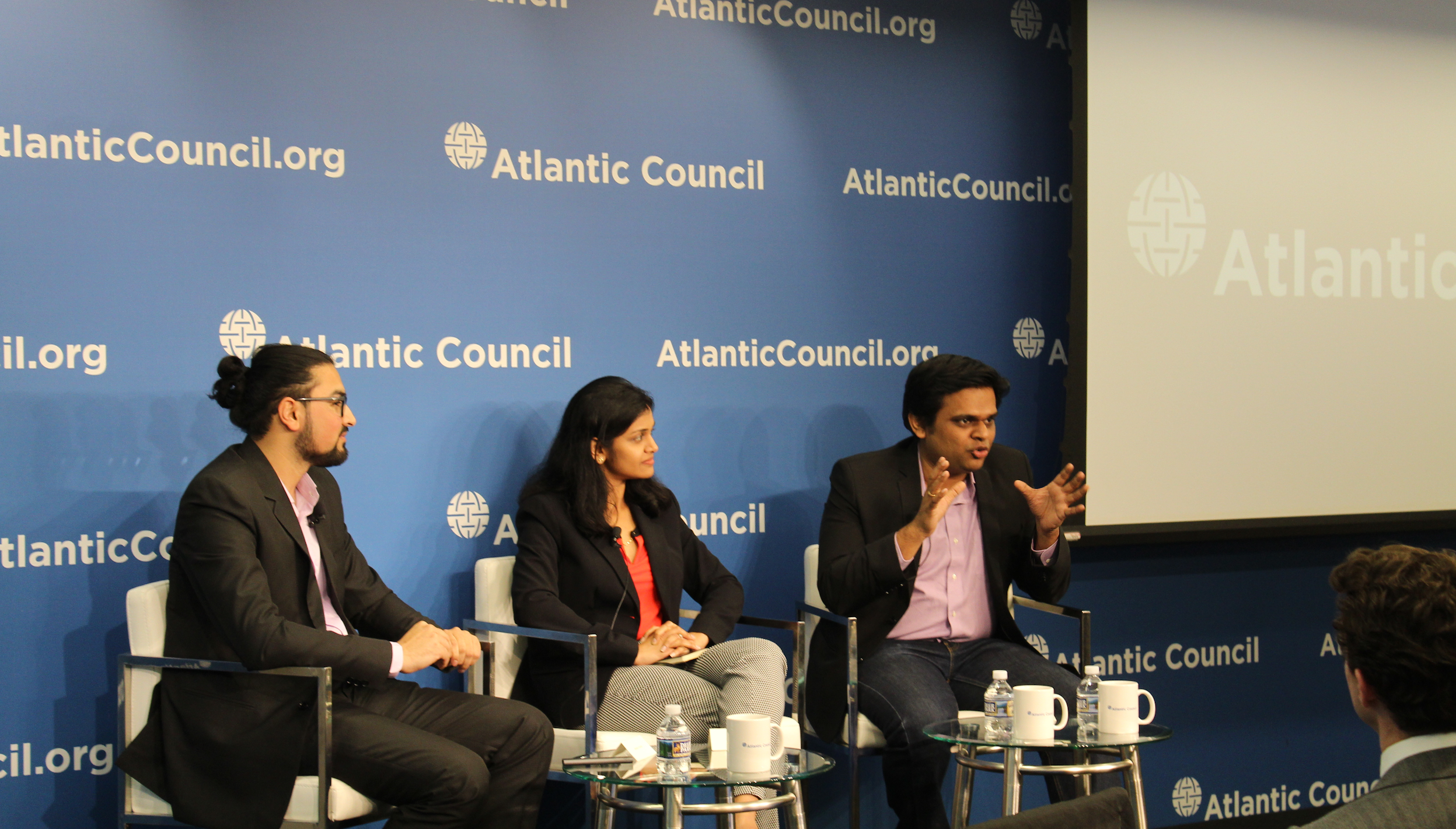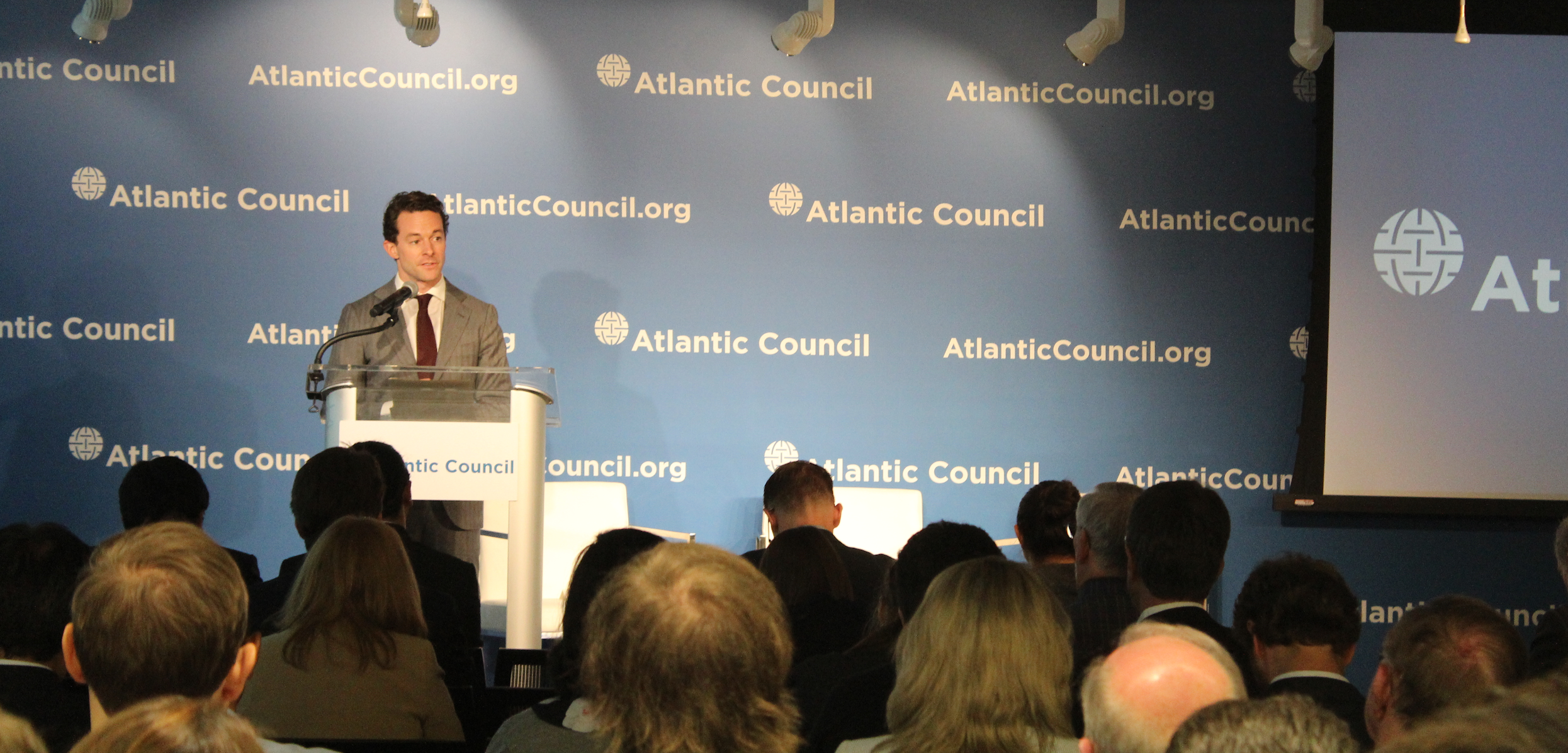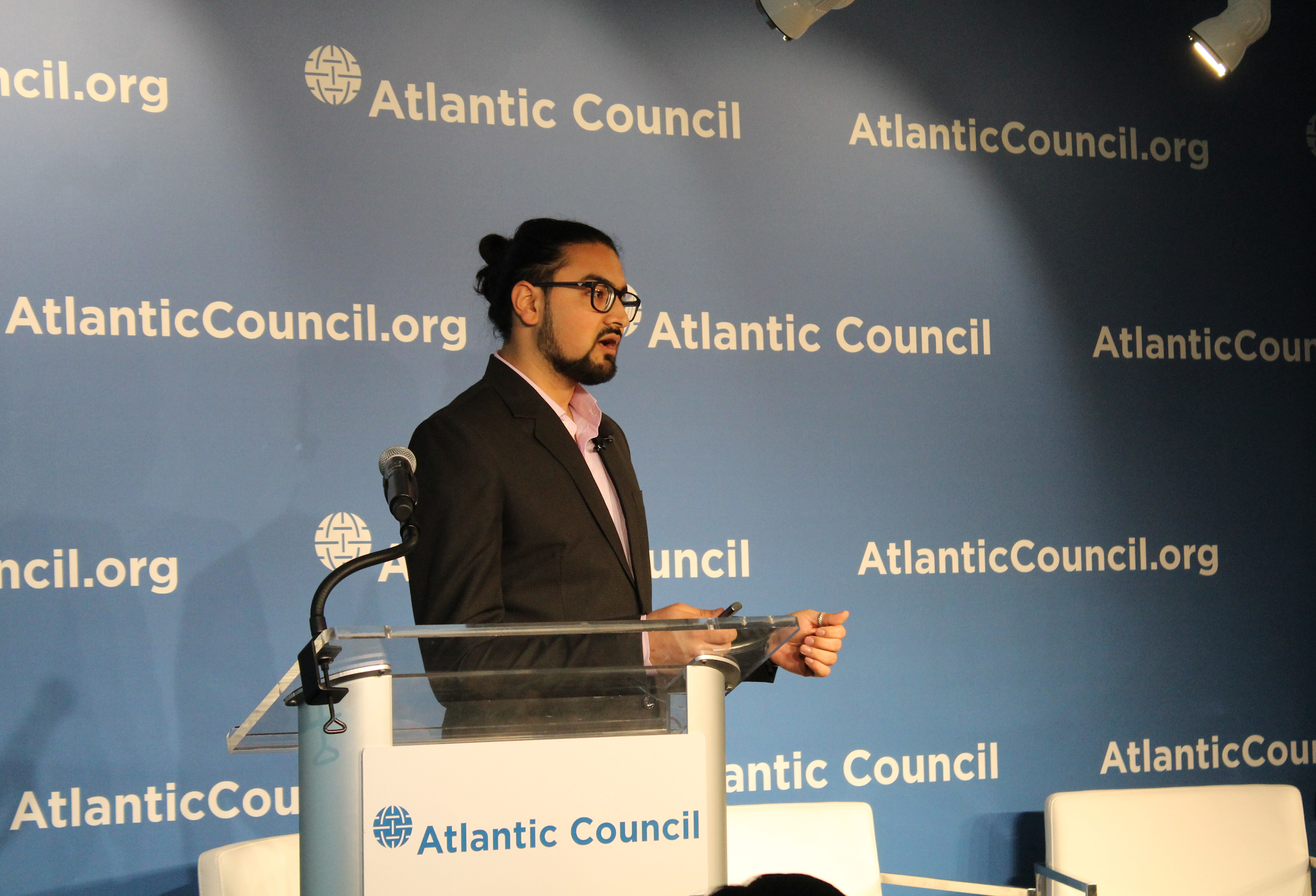 Energy storage is set to become a dynamic disrupting force in the energy market as innovative battery technologies provide opportunities for increased green energy utilization and electric vehicle growth. On May 16, the Atlantic Council’s Global Energy Center hosted a lively discussion with Akshat Rathi, Mitalee Gupta, and Venkat Viswanathan on the future of energy storage, with panelists tackling the role of batteries within the low-carbon energy transition, bottlenecks in the critical mineral supply chain, and the possibility of battery-powered vehicular flight. The event began with an introduction by David Livingston, deputy director of climate and advanced energy at the Atlantic Council Global Energy Center, who provided context regarding the potential for US leadership in the advanced battery and electric vehicle markets.
Energy storage is set to become a dynamic disrupting force in the energy market as innovative battery technologies provide opportunities for increased green energy utilization and electric vehicle growth. On May 16, the Atlantic Council’s Global Energy Center hosted a lively discussion with Akshat Rathi, Mitalee Gupta, and Venkat Viswanathan on the future of energy storage, with panelists tackling the role of batteries within the low-carbon energy transition, bottlenecks in the critical mineral supply chain, and the possibility of battery-powered vehicular flight. The event began with an introduction by David Livingston, deputy director of climate and advanced energy at the Atlantic Council Global Energy Center, who provided context regarding the potential for US leadership in the advanced battery and electric vehicle markets.

David Livingston delivering remarks at the event.
Akshat Rathi, senior fellow at the Atlantic Council Global Energy Center and senior reporter for Quartz, followed Livingston to the podium, delivering a presentation that put the ensuing conversation in context. Rathi emphasized that while new-age battery development is technological and geopolitical in nature, such advancements also have a major environmental impact, allowing humanity to move away from fossil fuels and towards green energy innovation. In his presentation, Rathi laid out the key technical aspects surrounding advanced battery technologies, and focused on how certain critical minerals, namely lithium and cobalt, provide the greatest capacity for high-power, energy-dense storage. The majority of energy storage and battery technology innovation has occurred in East Asia, mainly in China, South Korea, and Japan. However, Rathi affirmed that stateside, startups have also begun to penetrate the market, with Tesla serving as the foremost example.

Akshat Rathi making his presentation at the event.
Mitalee Gupta, energy storage analyst at Wood Mackenzie, and Venkat Viswanathan, assistant professor of mechanical engineering at Carnegie Mellon University, joined Rathi on stage following the presentation. Critical minerals were a main focus of the conversation, as ore supply market monopolies and chokeholds serve as the primary obstacles to global US battery leadership. Cobalt is often unethically sourced from Congolese conflict mines, then transferred to China for processing and export, resulting in a Chinese market monopoly over the mineral. To reduce dependence on cobalt in new-age battery and solar panel production, corporations are moving away from Congolese cobalt sources and toward more ethical extraction in third countries. At the same time, scientists are working to lower the cobalt ratio required to achieve an optimal level of energy storage capacity, while simultaneously studying how to raise storage potential for iron, manganese, and lithium in these devices.
Beyond mineral monopolies, the panelists highlighted fire safety as a major concern for battery manufacturers. As battery packs provide bursts of high-power energy, they become less efficient and more likely to combust, leading to greater risk of chemical fire. Recently, battery production factories around the globe have witnessed intense battery fires, raising concerns about the future of the industry and its scalability.
While current electric vehicle batteries have high power requirements, relatively long charge times, and short range potential, Viswanathan assured the audience with “high confidence” that within two years customers would be able to purchase an electric vehicle with a three hundred mile range and a charge time of only fifteen minutes. However, pickup trucks, SUVs, and long-haul trucks would not apply, due to weight and power constraints. Replaceable batteries could potentially solve certain truck fleet energy issues, but panelists remained doubtful that commercial electric trucks would be available in the near future.
The session then turned to the audience, with attendees raising important questions concerning supply chains, battery fire safety, and electric vehicle development constraints. Several attendees questioned the viability of alternative storage technologies such as liquid flow and hydrogen fuel cells, with Viswanathan highlighting the efficiency premium of traditional lithium batteries. Additionally, the lack of vertical integration within the new-age battery supply chain raises concerns over dependence on Chinese refininement. Lithium ion plants provide a potential solution, with developing chemistry technology advancements to allow for easier in-house battery production, as seen with Tesla’s Gigafactory.
Finally, Viswanathan discussed the potential for flying cars. Due to current limitations in physics and chemistry, electric planes are theoretically impossible due to the heavy power requirements necessary for takeoff and landing. However, air travel with smaller scale passenger vehicles may be feasible. Viswanathan assured the audience that such developments may become realities in the coming decade, going as far as to predict the emergence of short-range ride-sharing aircraft, permitting policy advances in step with technology.
To watch the event, check out the webast here.